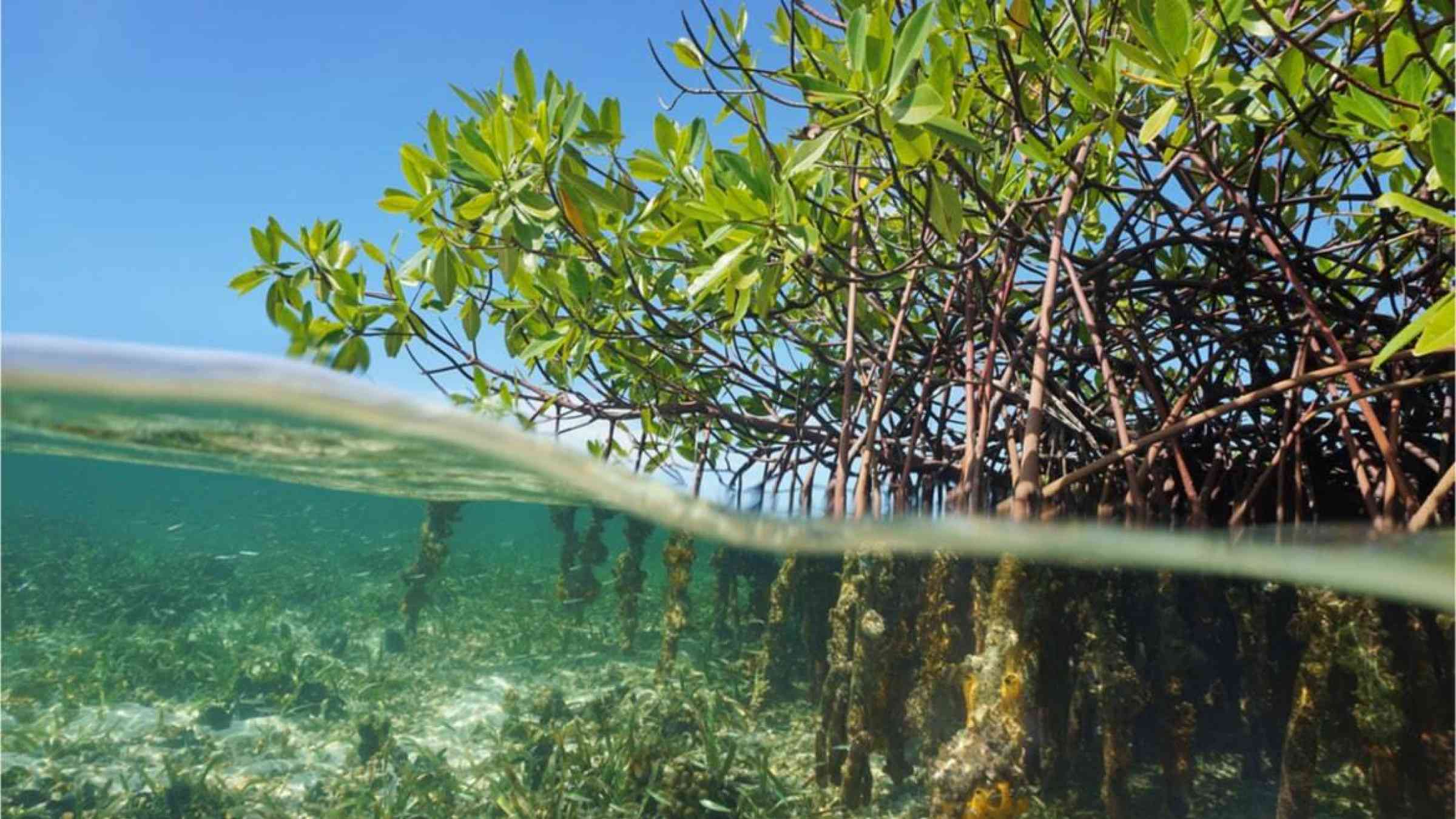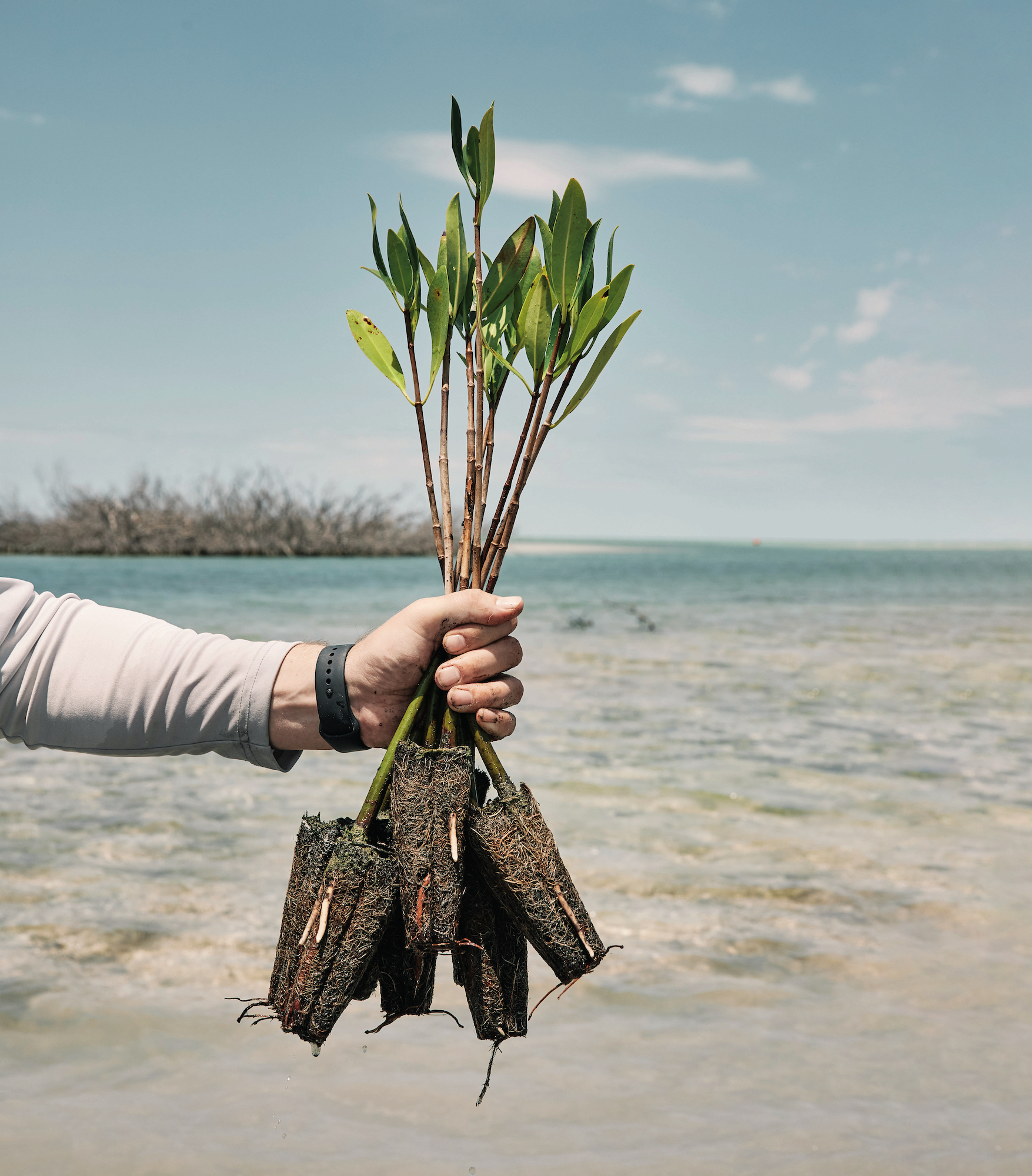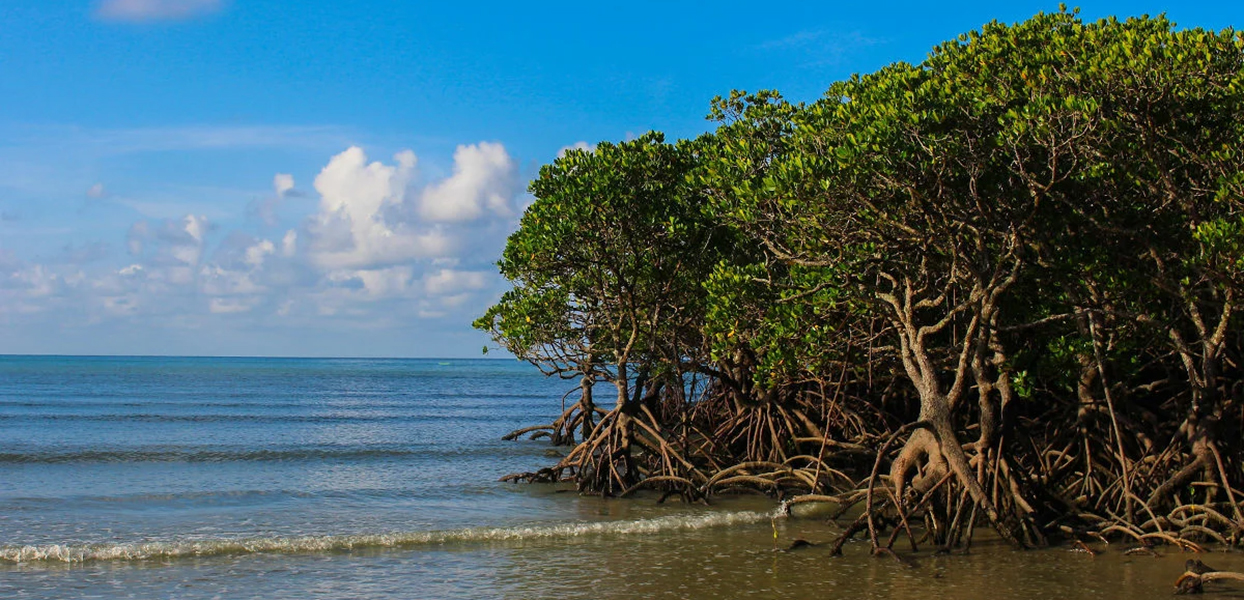Plant Mangroves
Plant-based
Mangroves are highly effective at sequestering carbon due to their dense root systems and rapid growth. They also provide critical ecosystem services, such as coastal protection, biodiversity support, and water filtration. Mangroves can store up to 4 times more carbon per hectare than terrestrial forests, making them an efficient natural climate solution.
Mangrove forests are unique ecosystems found along tropical and subtropical coastlines.
These dense forests play a crucial role in coastal ecosystems, providing a variety of environmental benefits. The "Plant Mangroves" project focuses on restoring and expanding mangrove forests, leveraging their exceptional ability to sequester carbon and enhance biodiversity.
Carbon Sequestration
Mangroves are highly efficient carbon sinks, capable of capturing and storing carbon dioxide at rates up to four times higher than terrestrial forests. This exceptional carbon sequestration capacity is due to their unique root systems and the organic matter trapped within their dense stands. By planting and restoring mangrove forests, the "Plant Mangroves" project contributes significantly to mitigating climate change by removing excess carbon dioxide from the atmosphere.

Ecosystem Services
Mangroves provide a wide range of essential ecosystem services, including:
- Coastal Protection: Mangroves act as natural barriers, protecting coastal communities from storms, erosion, and sea-level rise. Their dense root systems dissipate wave energy and stabilize sediments.
- Water Filtration: Mangroves play a vital role in filtering pollutants and improving water quality. Their roots and associated microorganisms help to remove pollutants from coastal waters.
- Habitat for Marine Life: Mangroves provide critical habitat for a diverse range of marine species, including fish, shrimp, crabs, and birds. These forests serve as nurseries for many commercially important species.
- Biodiversity Conservation: Mangroves support high levels of biodiversity, both within the forest itself and in the surrounding marine environment.
Project Benefits
The "Plant Mangroves" project offers dual benefits for climate mitigation and environmental resilience:
- Climate Change Mitigation: By sequestering carbon dioxide, mangrove restoration projects contribute to reducing greenhouse gas emissions and mitigating the impacts of climate change.
- Environmental Resilience: Mangroves enhance the resilience of coastal ecosystems by providing protection against natural hazards, improving water quality, and supporting biodiversity.

Challenges and Considerations
While mangrove restoration offers significant benefits, there are challenges to consider:
- Habitat Loss: Mangroves are threatened by deforestation, pollution, and coastal development. Restoring and protecting these ecosystems requires addressing these threats.
- Community Engagement: Successful mangrove restoration projects often involve collaboration with local communities. Engaging communities in the planning and implementation of restoration efforts is essential.
- Funding: Mangrove restoration can be resource-intensive. Securing adequate funding is crucial for the success of such projects.
Conclusion
The "Plant Mangroves" project is a valuable initiative that addresses the urgent need for climate mitigation and environmental resilience. By restoring and expanding mangrove forests, this project contributes to a healthier planet and a more sustainable future.


